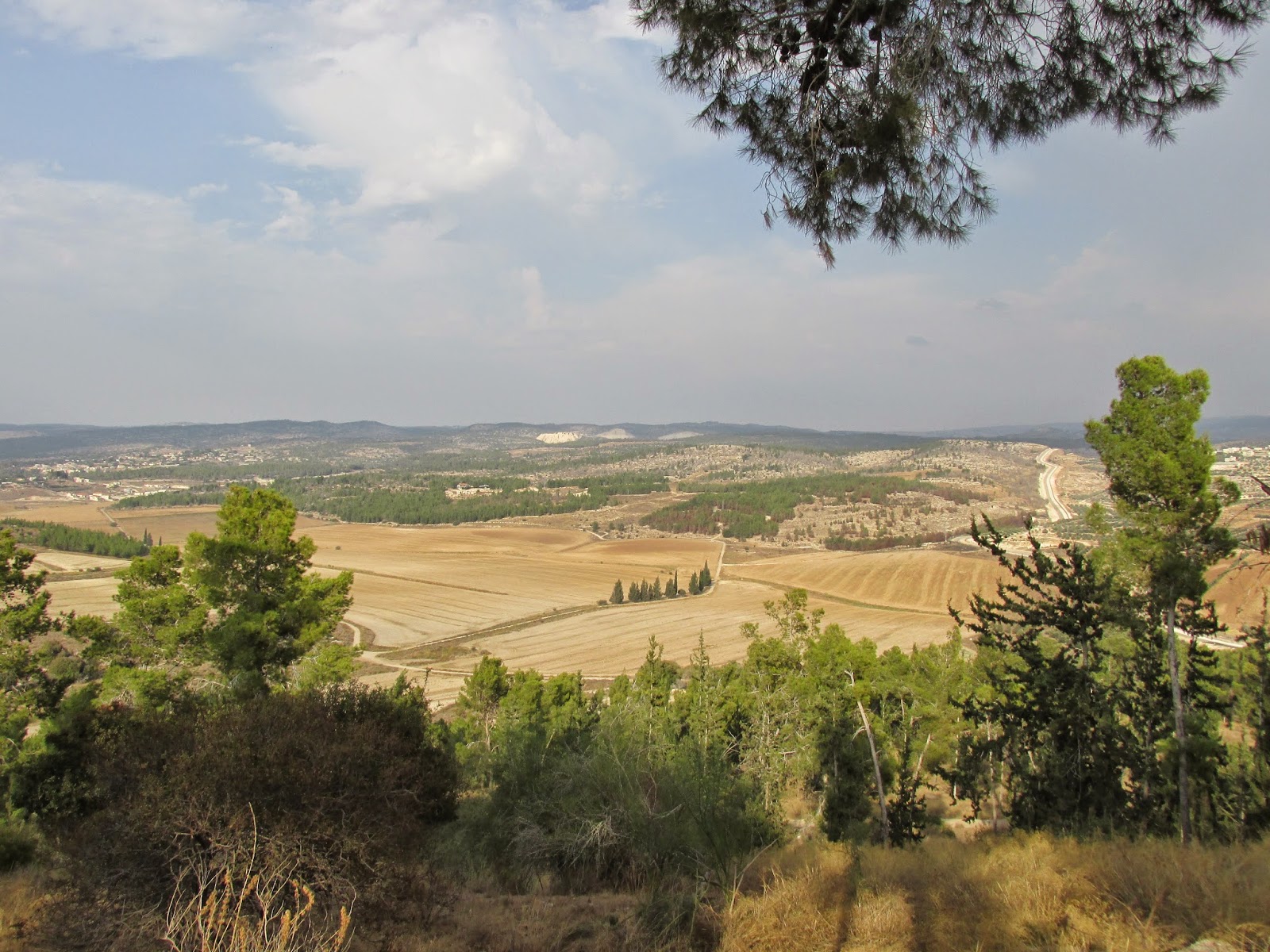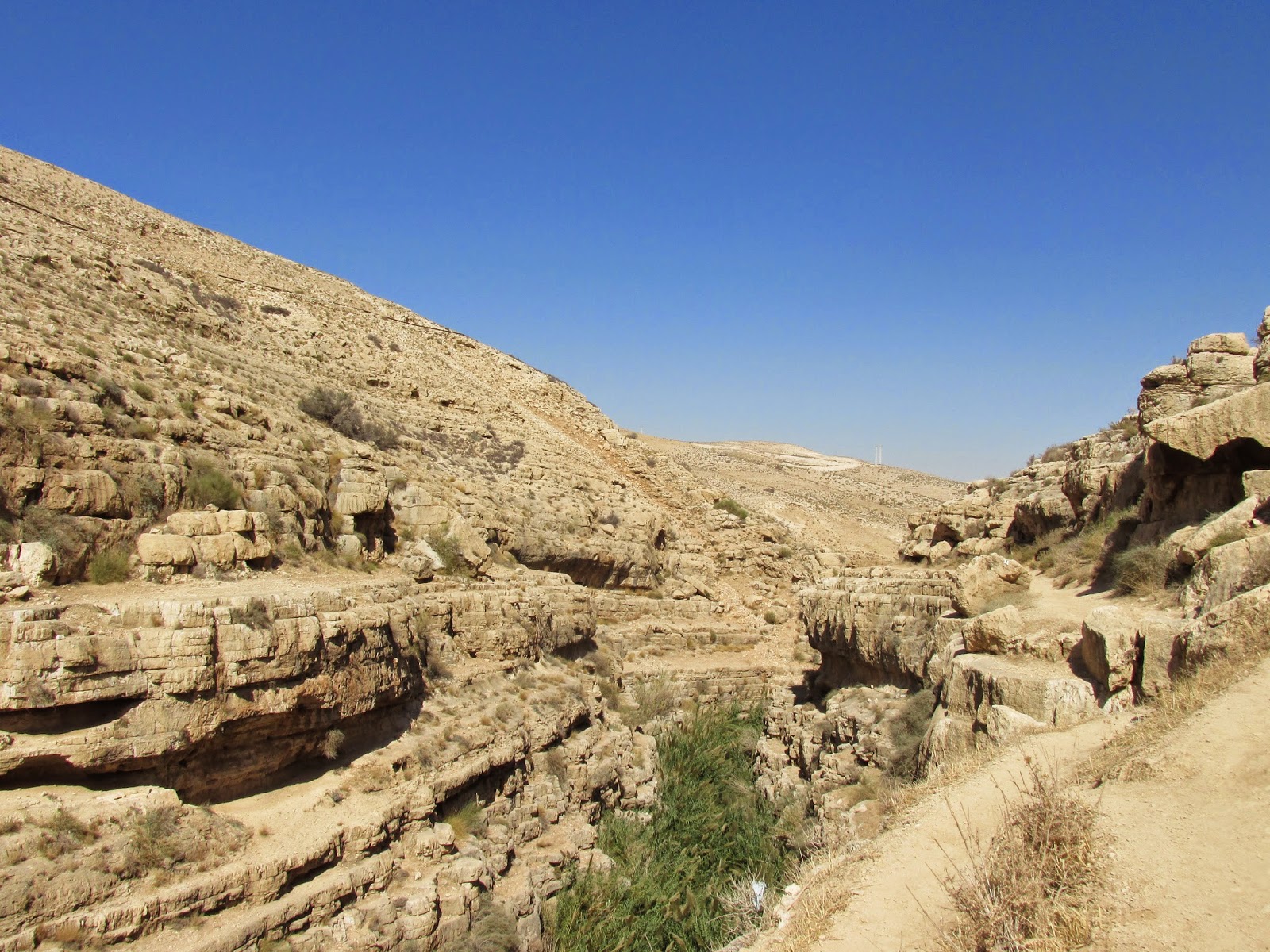Several week ago now...we had a tour of the Shephelah! It's the 'low, rolling hills' region of the country. The first stop, on the first day, was at the tel of
Gezer, which is mentioned in 1 Kings 9:15.
Along with Hazor and Megiddo, Gezer is one of the 5 most important sites
in Israel. It ‘s really neat to see a
city that was so important for ancient people for so long! The Gezer calendar was found
here which is the oldest Hebrew text, and is really important for understanding
ancient agriculture. The nicest Iron Age
gate, Solomon’s Gate, is found at Gezer.
One of the reasons why it’s so important is because it is the beginning
of the classical fortification style of ancient Israel. We stopped at the high place of Gezer and saw
the standing stones that were possibly made as a sign of treaties.
The standing stones at Gezer
Solomon's Gate
Our next stop was at tel As Safi, or
the ancient site of Gath, which is the
hometown of Goliath.
Azekah was the next site that we
went to. It listed as part of the
inheritance of the clan of Judah in Joshua 15.
From here, we could see Khirbet Kiafah, Socoh and the Elah Valley, where
David fought Goliath. We read the story
of David and Goliath from 1 Samuel 17 here.
We descended from Azekah to go to the Elah Brook, where we could get a
stone similar to what David might have used in his sling!
Overlooking the Elah Valley from Azekah
The Elah Brook
The slopes of Adullam, another site
mentioned in Joshua 15, was our last stop of the day! It was a really beautiful view, but it was
also really neat to read and reflect on Psalm 34 and 56. I really enjoyed
being able to take a moment and picture where David actually was when he was
having these struggles, but then turned around and praised the Lord!
The view from Adullam
A sheepfold (sheep corral/cave) on Adullam
On the second day of the Shephelah
tour, we started by going to Bet Shemesh, Samson’s hometown. We looked again to the list of cities in
Joshua 19 and saw Bet Shemesh, and then we read Samson’s story in Judges 13. It’s also been interesting to see
how different my view of Samson that I got from Sunday school is! I always thought that he was sort of a good
guy (God still works through him of course!) but he’s really quite bad!
From here, we went to Socoh, a city
that we had a view of from our first trip at Azekah. Even though we talked about David and Goliath
on the previous trip, we reenacted the story, which was really fun!
The hometown of Micah the prophet,
Moresheth-Gath, was out next site. We
went spelunking here, which was an interesting experience! I couldn’t even begin to imagine how difficult
it would be to live in such a small space...let's just say I hope that I never go back into a cave like that ever again :) When we all finally figured out how to exit the cave, we went over to
the nicest amphitheater of the country at Bet Guvrin and had a fake gladiator
fight that was very entertaining!
In the area,
there was a columbarium, a big cave built to house pigeons. They would use the pigeons to eat or
sacrifice, and they would use the bird poop for fertilizer. It is absolutely fascinating to me how they
had the caves as their ‘coops!’ After that, we
went to the Bell Caves. The thing that’s
interesting about these caves is that they were carved out for the purpose of taking
the limestone to make plaster for other cisterns instead of being made into
cisterns themselves. Benj also told us
that one of the caves is in the movie Rambo 3, which really makes me want to
have a movie night when we get back to America!
We sang a couple of songs in the cave and got to interact with some
Israelis who enjoyed our singing after we finished!
An ancient 'bird cage'
Bell caves
Our last stop of the day was at the
tel of Lachish. It is a huge site that
spans 30 acres! We also saw the remains of the Assyrian siege ramp
that was built up against the city walls…it’s very impressive! Joshua
10 talks about how Joshua conquered Lachish in the Southern conquest. The reason why Lachish is such an important city
is because it guards the southern approach to Judah.
After wandering around a little bit, we loaded up and headed back to Yad Hashmonah!
Lachish!
Enjoying a little stroll around the base of the tel
After wandering around a little bit, we loaded up and headed back to Yad Hashmonah!








































